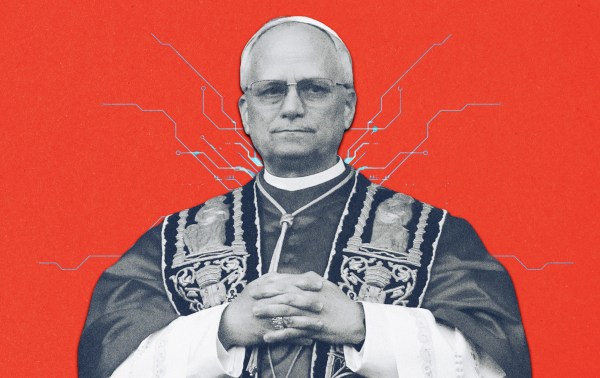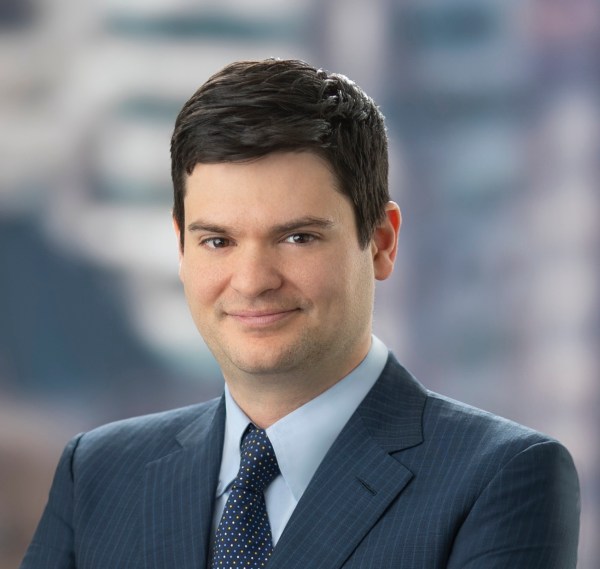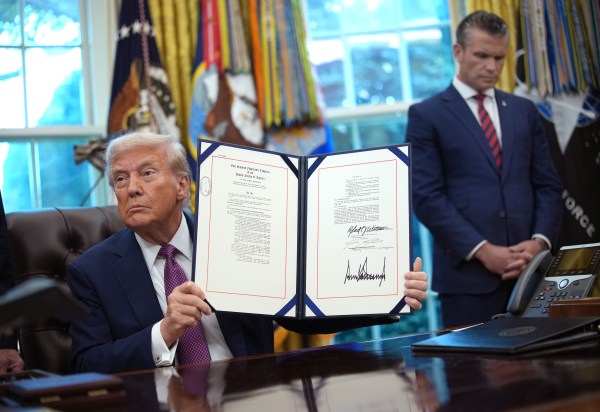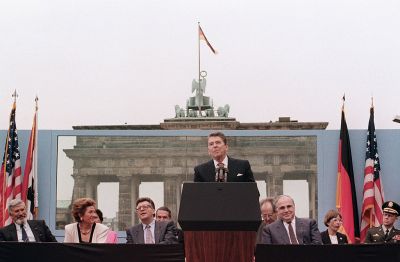Last week I read a tweet that led me to a book I’m now devouring at record speed. The tweet was from my friend Skye Jethani, and it referred to a potential link between the end of the Cold War and the rise of America’s religious nones. I’ve been thinking about the continuing influence of the Cold War on American life for a very long time. Our nation spent generations defined by the struggle against Soviet communism, and that struggle (along with its rather abrupt end) was bound to have profound effects on our national life.
The book is called Nonverts: The Making of Ex-Christian America, by a British sociologist named Stephen Bullivant. It’s not just an important book, it’s the best-written and most readable work of religious sociology that I’ve read in a very long time.
At the risk of over-simplification, Bullivant’s book attempts to explain the data contained in this chart, which maps the remarkable rise of religious “nones” in the United States:
The first thing you need to know about Bullivant’s work is that he recognizes the complexity of immense cultural trends. In Nonverts, he maps out and distinguishes between the different cultures of the different strands of American faiths. Ex-Evangelicals are not the same as ex-Mainline Christians, for example. Ex-Mormons are different in some ways from ex-Catholics.
While each person’s story is an individual story, Bullivant recognizes both timing and trends. In the chart above, a distinct data point stands out—the sharp rise of young “nones” begins in the early 1990s. Why? That’s when the Cold War ended, and Bullivant argues convincingly that the end of the Cold War marked the beginning of a new era of American religion.
Memory of the Cold War is fading from American life. I’m in the youngest cohort of Americans who vividly remember what it was like to grow up in the shadow of the threat of nuclear extinction, and I’m 53. It all feels like a long time ago when the entire nation was glued to the television to watch The Day After. The downing of KAL 007 and the fear of imminent conflict with a Soviet superpower seems like ancient history.
It’s thus easy to forget that our nation’s struggle against atheistic Soviet communism defined our national purpose for almost 50 years. That struggle came hard on the heels of a cataclysmic world war fought against great powers animated by two non-Christian ideologies, Nazi fascism and Japanese imperialism.
Generations of Americans grew up against the backdrop of an existential struggle that was also inescapably religious—more so, Bullivant notes, in the U.S. than elsewhere. America was already more religious than its European allies, so Soviet atheism impacted our view of the conflict even more than it did elsewhere.
The national motto, “In God We Trust,” is a Cold War artifact, enacted in 1956 in part to distinguish the United States from the Soviet Union. The phrase “under God” was added to the Pledge of Allegiance in 1954, also for the purpose of distinguishing America from its communist foes.
There were many ways of capturing the distinctions between the United States and the Soviet Union, including phrasing it as freedom versus tyranny and communism versus capitalism, but the formulation of atheism versus faith resonated in tens of millions of American hearts. The association flowed the other way, too: Americans often (and often wrongly) sensed the stink of communism around atheism. The social pressures against public professions of unbelief were overpowering.
At the same time, the necessity of deterring the Red Army meant a massive peacetime militarization of American life. Before the Cold War, America was fundamentally different from many of its European peers. They would maintain immense standing armies. We, by contrast, would rapidly build our strength in times of crisis and then almost immediately demobilize when the war ended.
That’s one reason why Germany twice underestimated American strength. We simply didn’t maintain a large peacetime military. That all changed with the Cold War. Our military strength surged during actual conflicts—such as the Korean War and the Vietnam War—but it never got small. In the 1980s, for example, the active duty American military numbered more than two million, and a much higher proportion of Americans served in uniform. America built a warrior culture and a warrior class, a culture and a class that it retains (in smaller form) to this day.
When you add these things together, you start to get a clear picture not just of why so many millions of Americans identified as Christian—even if they weren’t all that devout—but also why they tied their Christianity to a degree of martial strength and readiness. Faith, patriotism, and military power were linked together in profound ways.
To be clear, there was a lot that was right about this uniquely American response to the Soviet Union. There were obvious American and Christian excesses in Cold War rhetoric, but it was still correct to see the religious elements of the struggle, and it was necessary to summon the martial strength of the country to deter Soviet aggression. At that distinct time in our nation’s history, we needed faith, patriotism, and men in tanks guarding the Fulda Gap.
To give you a sense of the sheer scale of the challenge to America, in 1984 the Warsaw Pact confronted NATO with six million men under arms. This included 246 divisions equipped with up to 61,000 main battle tanks. Four million faced NATO forces in Europe. NATO, by contrast, stationed 2.6 million men in Europe and mustered 4.5 million troops worldwide.
I share these numbers to remind readers of the incredible civilizational effort exerted by both sides in the Cold War. I’m grateful Americans were motivated to defend religious freedom from a tyrannical, oppressive, explicitly atheistic threat.
Given those long decades where faith mixed with capitalism and military power in an effort to defend against the Soviets, you can see why that mixture became imprinted in the American church, especially in its more conservative corners. It certainly became imprinted on me—when I was younger I resolved to take my turn in the military both because I wanted to defend the United States and because I wanted to block the expansion of an atheistic empire.
Then, suddenly, the Soviet threat was gone.
As Bullivant notes in his book, the fall of communism meant that “talk of ‘a final, all-out battle between communist atheism and Christianity’ was much less a part of the cultural background.” Now only the oldest millennials have the faintest recollection of what it meant to fear the destruction of our civilization at the hands of a hostile imperial aggressor.
Instead, millennials faced something else entirely. “Very soon,” writes Bullivant, “the most pressing geopolitical threat to baseball, Mom, and apple pie was not from those without religion but those with rather too much of the wrong kind of it.” The 9/11 attacks introduced Americans to Islamic fundamentalism, and “religious extremism, in the form of radical Islamic terrorists, usurped the place in American nightmares that communist infiltrators used to occupy.”
Moreover our nation—quite rightly and quite intentionally—refused to turn the fight against Islamic terrorism into a religious war. To cast American interventions in the Middle East as part of a war between Christianity and Islam was to play directly into our enemies’ hands. Instead, our first motivation was simple self-defense. Our second motivation was based more in democracy and human rights than in faith or religion.
I don’t want to imply that Bullivant is ascribing all of the growth of the “nones” to seismic geopolitical events. There was a lot happening here at home as well, including (quite notably) a sexual revolution that often took direct aim at Christian sexual ethics. But these geopolitical events did matter quite a bit, and we can’t fully understand our country and our decline in religious affiliation without reference to these events.
Do we wonder why older American Christians so often blend together faith, patriotism, and military strength that it often can be difficult to understand where one element begins and the other ends? Remember the generations-long Cold War. Echoes of that formulation exist to this day. Go to an SEC football game, and you’ll sometimes see it in almost its platonic form—begin with prayer, sing the National Anthem, and then cheer a flyover by F-35s.
Again, I’m not mocking or slighting this in the least. This combination of virtues helped preserve our civilization and scored an astonishing victory over brutal tyranny. In fact, we don’t talk enough about the Cold War and the long, courageous vigilance that sustained our defense.
Do we wonder why younger Americans, including many younger American Christians, don’t see the world the same way? Then remember 9/11 and the 20-year military struggle that followed. In fact, as Bullivant argues, “the atrocities of 9/11 opened up the possibility for a full-throated presentation of Atheism-with-a-capital-A to gain a hearing (and vast book sales).”
Bullivant continues:
A brand of what one might call patriotic atheism was an explicit part of New Atheism’s pitch. Sam Harris, whose bestselling The End of Faith (2004) was the first blossom of this atheist spring, makes much in that book of how he started writing it on September 12. Richard Dawkins, promoting his multimillion-selling The God Delusion (2006), was not shy in pointing out that he had wanted the accompanying TV series to be advertised with an image of the New York skyline with a prominently intact Twin Towers, and the tagline “Imagine no religion…”
While the New Atheism has faded (ironically enough, it proved too fanatical and fundamentalist to gain truly broad popularity), it undeniably shifted the American cultural conversation. No longer was unbelief somehow unpatriotic. In fact, too much belief could carry its own problems.
Where does this leave us? Bullivant’s book is a reminder that culture and context matter. While any given individual may resist the tides of the times, at scale religious affiliation is more malleable than we might think. The malleability of religious affiliation is one reason why it’s important to think of affiliation and faith as perhaps distinct and different concepts.
Indeed, context and culture can shape even what it means to think of ourselves as Christian or religious at all. Grow up when religion is perceived as dangerous, and marginal believers might be eager to shun religious labels. Grow up when religion is perceived as a necessary part of citizenship, and marginal believers will identify with a faith even if they aren’t particularly devout.
But Bullivant’s bottom line is both provocative and important. If we want to understand why the American religious landscape has changed so much and so fast, don’t just look at our domestic cultural conflicts—look also to one of America’s greatest triumphs. Our victory in the Cold War transformed our nation’s faith.
One more thing …
I truly enjoyed our most recent Good Faith podcast. Curtis and I took a look at signs of hope in 2022. But this wasn’t just a podcast about good news. It was a podcast about a specific type of good news—events that demonstrated an underlying eternal truth. We started our discussion in Ukraine before coming back home. Give it a listen. I think you’ll find it encouraging.
One last thing …
Alison Krauss has one of the most beautiful voices I’ve ever heard. Her version of the Wexford Carol, with Yo-Yo Ma, is just lovely. Enjoy:







Please note that we at The Dispatch hold ourselves, our work, and our commenters to a higher standard than other places on the internet. We welcome comments that foster genuine debate or discussion—including comments critical of us or our work—but responses that include ad hominem attacks on fellow Dispatch members or are intended to stoke fear and anger may be moderated.
With your membership, you only have the ability to comment on The Morning Dispatch articles. Consider upgrading to join the conversation everywhere.